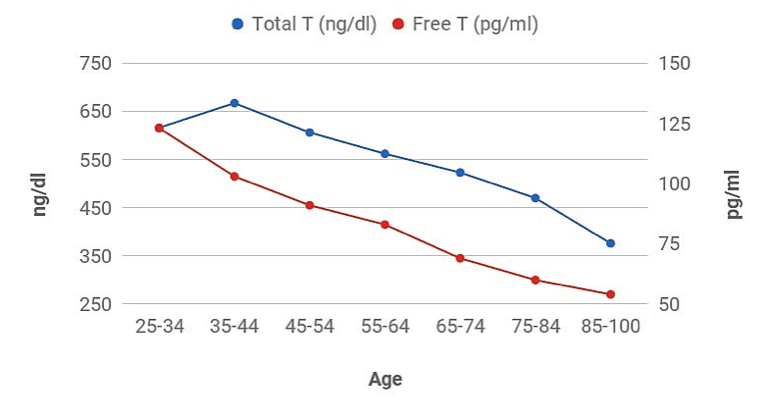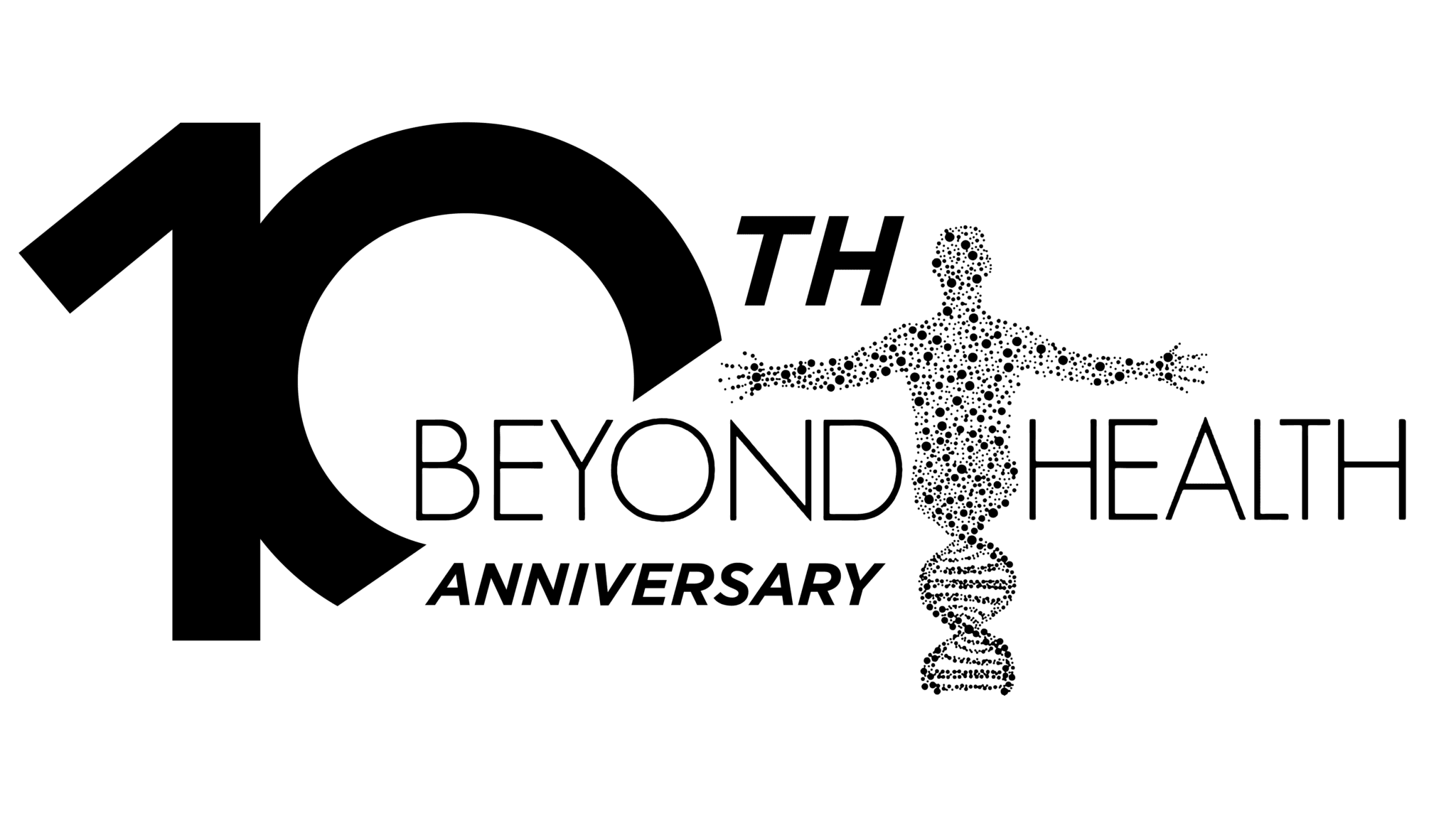Testosterone deficiency (alternatively known as “low T”) is a public health disaster for American men of all ages; our levels have fallen drastically in recent decades and will likely continue to plummet without corrective action.
Let’s get into the symptoms and causes of low testosterone and, most importantly, what assistance BEYOND HEALTH can offer to boost your levels and restore your masculine energy if you are one of the thousands of men in New Mexico impacted by testosterone deficiency.
What Are the Symptoms of Low Testosterone in Men?
Briefly, here are (some of) the symptoms caused by low T:
- Fat accumulation, most notably around the midsection (so-called “beer gut”)
- Muscle loss
- Low libido (loss of sexual desire)
- Erectile dysfunction (ED)
- Poor sperm quality
- Low energy levels (chronic fatigue)
- Poor concentration/memory
- Cognitive issues
- Anxiety, depression, and various other emergent mental health issues
Many doctors may prescribe patients with testosterone deficiency medications to treat the symptoms (phosphodiesterase type 5 inhibitors like Viagra or Cialis to treat erectile dysfunction, for example) without ever addressing the root cause – a mistake that could take years off of your life unnecessarily.
Any man experiencing the above symptoms should get their testosterone levels checked (more on diagnosing testosterone deficiencies later).
What Causes Low Testosterone?
Some of the major culprits of low testosterone in men include:
- Air and water pollution
- Estrogen-mimicking food additives and poor dietary choices (the “soy boy” phenomenon)
- Stress
- Age*
*Historically, age has been the most significant predictor of low T; however, as we will explore coming up, men and even boys are experiencing deficiencies at younger and younger ages.
What Happens to Men’s Testosterone Levels During the Aging Process?
Testosterone levels peak, on average, in the late teens or early 20s for most men. The average 17-18-year-old young man typically has around 300-1,200 ng/dL blood concentration of the male sex hormone – hence the stereotypical boundless energy levels and high libido of males in this age range.
Following this peak in adolescence, the average man’s T count drops by a consistent rate of roughly 1% per year. This means that, unfortunately, it’s entirely common that a 45-year-old man has only 75% of his peak T counts at this age while a 70-year-old man may only maintain half the T levels of a 20-year-old – bad news for virility and energy.

Testosterone Deficiency: No Longer Just an Aging Man’s Problem
Unfortunately, in the modern world, no man – or even boy — is safe from the ravages of environmental factors that devastate testosterone levels at the population level.
The results of a recent 2020 study published in European Urology Focus detail the startling decline of testosterone among teenage and young adult males:
“Testosterone deficiency has a prevalence of 20% among adolescent and young adult (AYA) males… After controlling for confounders, we found that mean TT levels declined over time: TT levels were lower in the later (2011-2016) than in the earlier (1999-2000) cycles… We conclude that TT levels have been declining in young adult men in recent decades.”
The Long-Term Health Dangers of Untreated Low Testosterone
Testosterone receptors (often called “AR receptors”) are located throughout the body across multiple organs; the male sex hormone is absolutely critical for optimal physiological function of all organs, not just the reproductive system.
Accordingly, low testosterone is implicated in a number of chronic, age-related health conditions in men:
“Chronic illnesses are associated with an overt TD [testosterone deficiency]. Both chronic diseases and low T can be involved in determining symptoms present in subjects complaining for sexual dysfunction. This should be considered in the diagnostic workup for TD.”
The following list details a few (but by no means all) of the negative health consequences of untreated low testosterone in men:
- Anemia (potentially leading to chronic kidney failure)
- Atherosclerosis (hardening of the arteries that leads to heart disease)
- Osteoporosis (age-related weakening of the bones)
- Sarcopenia (age-related muscle atrophy)
- Alzheimer’s disease and other age-related neurodegenerative conditions
The bottom line: if you are a man over 40 experiencing any of the symptoms of testosterone deficiency that we covered in the previous section, you may very likely have a testosterone deficiency. When your healthcare provider suspects that you are affected by sub-optimal testosterone levels, the next step is to run diagnostic blood work (performed by a qualified lab) to confirm or disprove the theory.
With that in mind, let’s discuss how low T is diagnosed.
How is Low T Diagnosed in Men?
The process of diagnosing low testosterone in men is straightforward. The process essentially goes like this:
- Man visits doctor, explains symptoms
- Doctor performs physical evaluation, asks pertinent questions related to symptoms and medical history
- Patient visits local lab for a quick blood draw
- The lab analyzes the patient’s blood sample to detect testosterone and related hormone levels
- Doctor reconvenes with patient to discuss lab results
- If appropriate, the doctor and patient collaborate to develop the ideal therapy protocol
- Therapy begins
- Results begin in as little as 2 weeks, with maximal benefits coming around the one-year mark
The blood tests will likely measure a combination of hormones that may include:
- Total testosterone
- Free testosterone
- Estrogen (the female sex hormone)
- Sex hormone binding globulin (which captures testosterone and delivers it to various tissues throughout the body)
Below is a sample lab test report for a patient with suspected testosterone deficiency; you can expect a similar format from yours.
TRT Therapy: Why Are Bioidentical Hormones Optimal?
Bioidentical hormones are ideal for all forms of HRT whenever possible, including for TRT, because bioidentical testosterone is molecularly identical to naturally occurring forms of the sex hormone produced in men’s testes.
Let’s briefly run down the advantages of bioidentical testosterone over other forms:
- More readily absorbed
- More cost-effective
- Fewer side effects
- Safer than alternatives (bioidentical hormones produced in the US are compounded in FDA-approved facilities)
BEYOND HEALTH: Expert TRT Providers
If you’re an older man struggling with any of the low T-related symptoms that we discussed earlier, the time is now to act.
Regardless of your age or the extent of your deficiency, reclaiming your youthful vitality is entirely possible with the correct therapeutic interventions – therapies that BEYOND HEALTH specializes in.
We’re proud to serve the Albuquerque and wider New Mexico community to help men regain their masculine vitality.
Contact us today to get started on the road to recovery. The vast majority of patients who receive TRT with bioidentical hormones notice a substantial improvement in their well-being – indeed, many TRT patients describe their health and wellness turnarounds as “miraculous.”
This article has been reviewed and approved by our medical team.
*This website is for educational purposes only. It is not intended as a substitute for the diagnosis, treatment, and advice of a qualified licensed medical professional. This site offers people medical information and tells them their alternative medical options, but in no way should anyone consider that this site represents the practice of medicine. This site assumes no responsibility for how this material is used. Also note that this website frequently updates its contents, due to a variety of reasons, therefore, some information may be out of date. The statements regarding alternative treatments for cancer have not been evaluated by the Food and Drug Administration.

